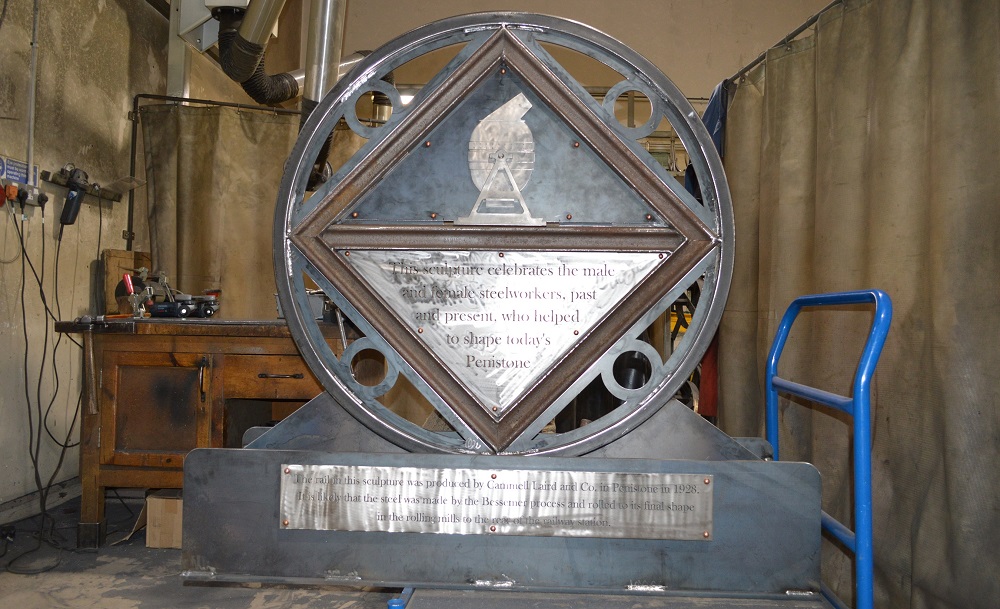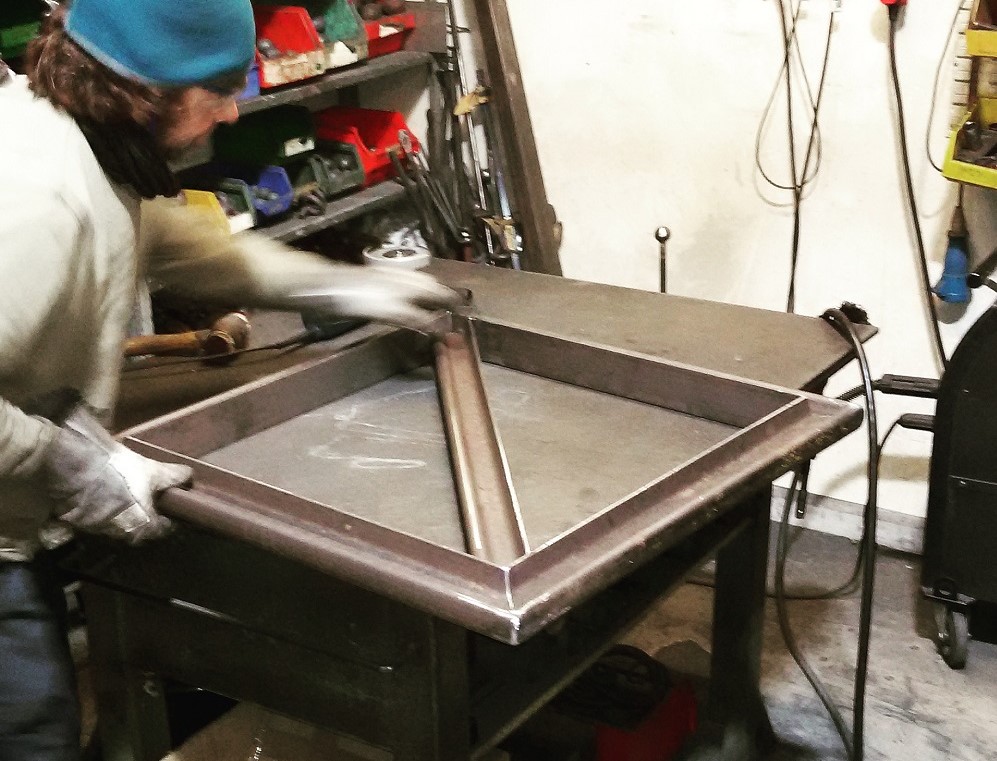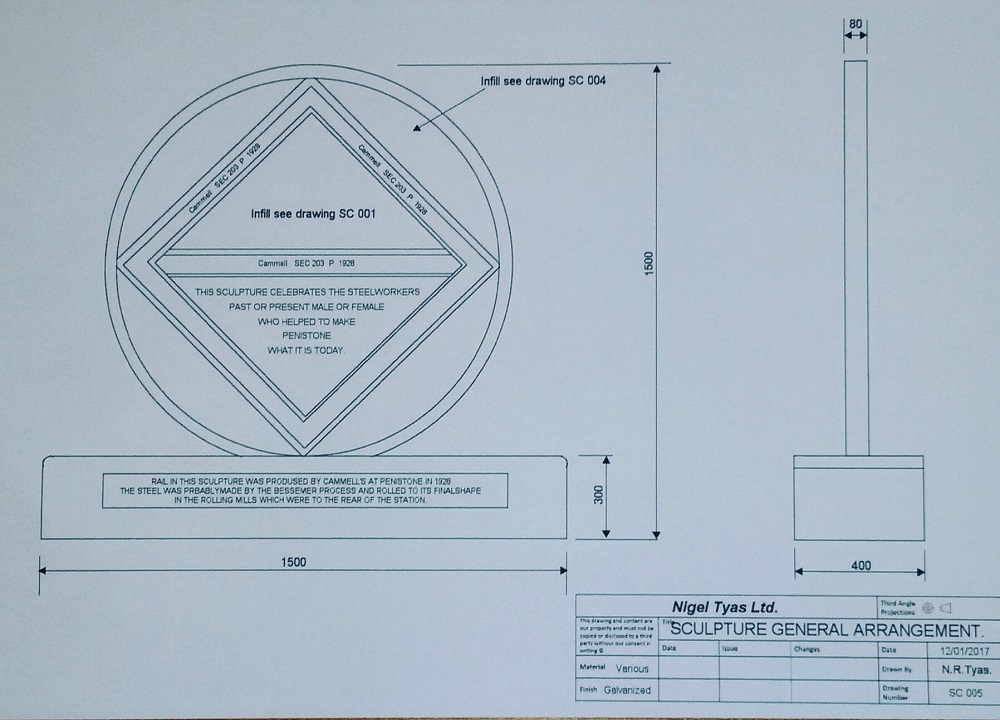
Creating a community sculpture to celebrate our steelmaking heritage
Posted by Steph Pollard - 13 August 2021
We are proud to have been involved in a community project to create a lasting memorial to a giant of industry in South Yorkshire – Cammell Laird Steelworks.

Some time ago a local farmer found an 18-foot length of railroad track in a stone wall on his family farm – and so begins the story of a very special commission for us here at Nigel Tyas Ironwork.
The railroad track found by Don Spenceley was identified as an original piece of track made by Cammell Laird steelworks in Penistone in 1928.

The steel used for the track was almost definitely made using the Bessemer process, which revolutionised steelmaking in Sheffield in the 19th century. Cammell Laird was one of the first works in the country to adopt this method and the Bessemer-made steel would have then been rolled into rails on the work’s rolling mills.
Cammell Laird Steelworks produced tracks in this way for thousands of miles of new railroad laid around the world during the late 19th and early 20th century and was a major employer in the area until its closure in 1930.

The story of the steelworks is included in the wonderful Kelham Island Museum in Sheffield which celebrates the steelmaking industry across our region. But there has never been a memorial to acknowledge the historical importance of the steelworks in our own town. When Don Spenceley donated his find to the Penistone History Archive Group, it was decided that that’s exactly what should be done with it.
Michael Horn, from the archive group, approached us to commission a sculptural monument to the former steelworks incorporating the original piece of train track at its heart. We worked together on designing a unique sculpture.

We made the ‘Spenceley Sculpture’ by forging pieces of the found railway track in to a crossed-diamond shape at its centre. The metalwork was tarnished and had deteriorated in parts so needed restoring and weather-proofing for the job. We then surrounded it with a decorative circle of steel.

Above this geometric centrepiece we fixed a wrought iron representation of the distinctive egg-shaped Bessemer converter. Cammell Laird gained one of the first licences to use this method of steelmaking from inventor Henry Bessemer in 1858. The Bessemer marked the beginning of mass steel production, as huge amounts could be produced in a relatively short time compared to crucible steel production. Pig iron was poured in to the top of it and a fiery blast of air was shot through the molten metal in dramatic style to extract all the impurities and leave the steelworkers with liquid steel. This was poured out of the converter as it was tilted forwards.
The finished sculpture has now been unveiled as a gateway piece of public art to welcome people to our town. It stands on the site of the former steelworks next to Penistone train station.
With its train track centre, it also recognises Penistone as an important railway hub on the Sheffield to Huddersfield line.

We hope you like the finished sculpture - a monument to all the men and women who worked at Cammell Laird Steelworks. We’d like to thank Penistone History Archive Group for getting us involved in this very worthwhile project.

